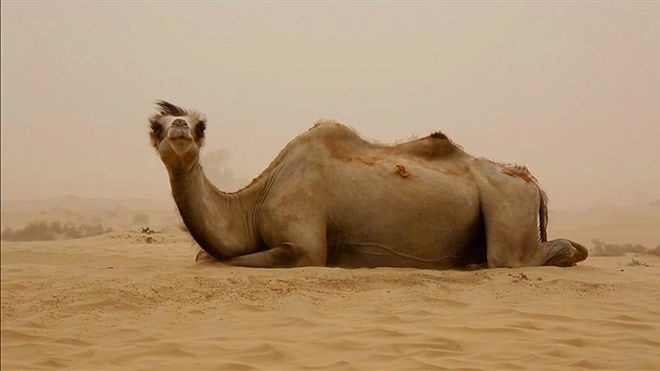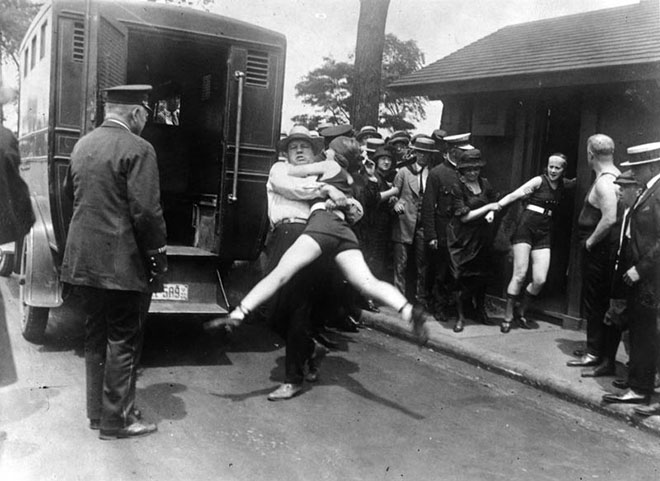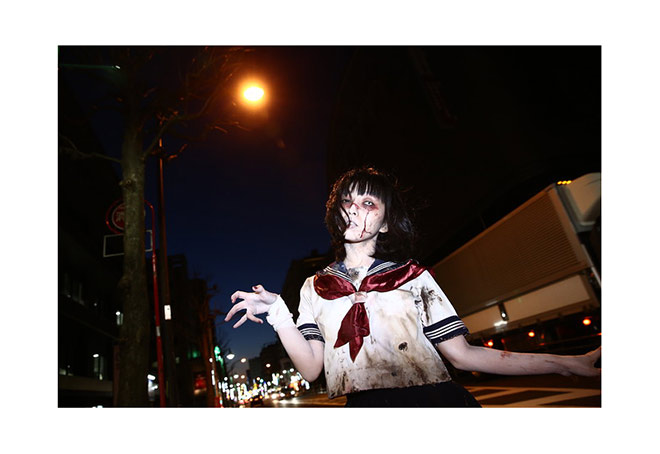within the world
People perceive religious and moral iconography in ambiguous objects, ranging from grilled cheese to bird feces
While both tourism research and photography research have grown into substantial academic disciplines, little has been written about their point of intersection: tourist photography. In this paper, I argue that a number of philosophically oriented theories of photography may offer useful perspectives on tourist photography. […]
When I was observing photographing tourists on the Pont Neuf and in the Jardin des Tuileries in Paris, one of the things that struck me was the fact that some tourists, when they came across a sculpture, first took a picture of it, and only started looking after the picture had been taken. Perhaps Sontag is right to argue that the production of pictures serves to appease the tourist’s anxiety about not working; in any case, this type of predatory photographic behavior promotes the accumulation of images to a goal in itself rather than a means to produce meaning or memories.
Kurtz: [intercepted radio message] I watched a snail crawl along the edge of a straight razor

{ Traditional rug-making techniques meet contemporary political imagery | full story }
Bruda Pszths and Brat Slavos
{ Base Jumpers Leap Off Of One World Trade Center | Police used surveillance footage to track down the men in a six-month investigation. }
unrelated:

{ Jordan Wolfson’s Animatronic dancer doll on view at David Zwirner Gallery }
Seize the moment. Remember all those women on the ‘Titanic’ who waved off the dessert cart.

Australia has begun exporting camels to Saudi Arabia.
More than 100 animals are being shipped from the Australian port city of Darwin and are due to arrive in Saudi Arabia in early July [2002].
The vast majority are destined for restaurant tables in a major camel-consuming nation.
photo { Janet Biggs, Point of No Return, 2013 }
Each conatus is also considered as a force tending toward self-expansion
One of them had a connection with dealers from South Jamaica — and brokered an arrangement where the New Yorkers would purchase narcotics from their California partners and then sell the drugs on consignment in the city, the sources said.
Their first transaction went smoothly, with the California trio shipping one kilo to their Queens partners, who sold the coke and promptly mailed a share of the money back to California, according to the sources.
But the New York dealers were slow sending the Californians their cut after a second transaction, the sources said.
And in their third and final deal, the South Jamaica goons not only kept all the proceeds after selling three kilos — they then tried to lure their business partners to New York City to assassinate them, according to the sources.
But only Woodard showed up on Dec. 10, 2012 […] and was murdered execution-style by a gunman in broad daylight on busy West 58th Street off Seventh Avenue.
Trespassers Will. That’s short for Trespassers William.



{ North Brother Island was in use by New York City from 1885 to 1963 as a hospital complex to quarantine and treat people suffering from smallpox and typhoid fever then a rehab center and a housing project for WWII vets. In the 1950s a center opened to treat adolescent drug addicts. Heroin addicts were confined to this island and locked in a room until they were clean. By the early 1960s widespread staff corruption and patient recidivism forced the facility to close. It is now uninhabited and designated as a bird sanctuary. | Rsvlts | more photos | Read more: NY Times, Wikipedia }
A way a lone a last a loved a long the
Deaths from drug overdoses increased by 102 percent between 1999 and 2010. […] As a recovering addict who still works with active users in communities where heroin is sold on the street, I can tell you that it’s particularly dangerous out there right now. Recently, an unpredictable and hard-to-track bad batch of Fentanyl-tainted heroin dipped and dodged its way through the mid-Atlantic. […]
Fentanyl-tainted bags go fast; ironically, when news of a batch laying users low spreads on the streets, heavy users seek the potent bags out by their brand stamp. Overdoses become advertisements for strong product. […]
Between 2007 and 2012, the number of heroin users ages 12 and up increased from 373,000 to 669,000.
{ The Atlantic | Continue reading }
Nearly 70 small bags of heroin and enough prescription drugs to fill a pharmacy were found in the Greenwich village apartment where Philip Seymour Hoffman died of an apparent drug overdose. […] Investigators are trying to find the drug dealer who supplied the actor with the heroin […] labeled “Ace of Spades,” or “Ace of Hearts.” […] The law enforcement source said that a process called “a nitro dump” could be key to cracking the case. “Basically what that is, is any time we make a narcotics arrest we include the brand name on the arrest report and store it in our system so our investigators can see where those brands are being sold,” the source explained. Once they determine a location, they can zero in on the dealer or dealers selling that particular brand.
Give us that brisket off the hook. Plup.

The most disturbing thing that ever happened at the Ueno Zoo was the systematic slaughter of the garden’s most famous and valuable animals in the summer of 1943. At the height of the Second World War, as the Japanese empire teetered on the brink of collapse, the zoo was transformed from a wonderland of imperial amusement and exotic curiosity into a carefully ritualized abattoir, a public altar for the sanctification of creatures sacrificed in the service of total war and of ultimate surrender to emperor and nation. The cult of military martyrdom is often recognized as a central component of Japanese fascist culture, but events at the zoo add a chilling new dimension to that analysis. They show that the pursuit of total mobilization extended into areas previously unexamined, suggesting how the culture of total war became a culture of total sacrifice after 1943. […] The killings were carried out in secret until nearly one-third of the garden’s cages stood empty, their former inhabitants’ carcasses hauled out of the zoo’s service entrance in covered wheelbarrows during the dark hours before dawn.
{ University of California Press | PDF }
This unprecedented ceremony known as the “Memorial Service for Martyred Animals” was held on the zoo’s grounds where nearly a third of the cages stood empty. Lions from Abyssinia, tigers representative of Japan’s troops, bears from Manchuria, Malaya and Korea, an American bison, and many others had been clubbed, speared, poisoned and hacked to death in secret. Although the zoo’s director had found a way to save some of the condemned creatures by moving them to zoos outside Tokyo, Mayor Ōdaichi Shigeo insisted on their slaughter. Ōdaichi himself, along with Imperial Prince Takatsukasa Nobusuke and the chief abbot of Asakusa’s Sensōji Temple, presided over the carefully choreographed and highly publicized “Memorial Service”, thanking the animals for sacrificing themselves for Japan’s war effort.
Driver Take Me to O’Block

After Michael Mann set out to direct Collateral, the story’s setting moved from New York to Los Angeles. This decision was in part motivated by the unique visual presence of the city — especially the way it looked at night. […] That city, at least as it appears in Collateral and countless other films, will never be the same again. L.A. has made a vast change-over to LED street lights, with New York City not far behind.
‘Sleeping is the height of genius.’ ―Kierkegaard
Shaun Khubchandani’s 10-week internship at Citigroup […] he was paid a $70,000 annual salary prorated on a weekly basis, or about $1,300 per week. […] a typical day during his internship:
8 a.m.: Wake up.
8:45 a.m.: Board subway at Columbus Circle to Citigroup’s offices in Tribeca.9-9:30 a.m.: Arrive at the office.
9:30 a.m.–12 p.m.: Do light tasks, like reading S-1 filings or internal memos, or double-checking numbers in Excel spreadsheets.12-12:30 p.m.: Grab lunch with fellow interns at a nearby Whole Foods—ideally a prosciutto-and-ham panini, with bread pudding for dessert.
1 p.m.–5 p.m.: Work alongside analysts, assisting them however possible. Ask for feedback on financial models or help with difficult calculations.
5 p.m.–6 p.m.: Assigned to a project—such as updating a PowerPoint slideshow or hard copies of client-presentation materials with the latest market data—by a managing director on his or her way out the door, sometimes to be completed by the next morning.
8 p.m.: Order dinner delivery with other interns and the analysts, courtesy of the bank: Italian on Mondays, Thai on Tuesdays, salads on Wednesdays and tacos on Thursdays. (On Fridays, dine out.)
10:30 p.m.–2 a.m.: Leave for the night.
‘unrealistic… they didn’t even eat the pizza?’ –@TopPornComments

{ Magyar was immersed in a long-running techno-art project called Stainless, creating high-resolution images of speeding subway trains and their passengers, using sophisticated software he created and hardware that he retrofitted himself. | full story }
This is what happens when you find a stranger in the Alps
A high-ranking FBI agent filed a sensitive internal manual detailing the bureau’s secret interrogation procedures with the Library of Congress, where anyone with a library card can read it. […]
“A document that has not been released does not even need a copyright,” says Steven Aftergood, a government secrecy expert at the Federation of American Scientists. “Who is going to plagiarize from it? Even if you wanted to, you couldn’t violate the copyright because you don’t have the document. It isn’t available.”
‘Repression is the only lasting philosophy.’ –Charles Dickens
American and British spies have infiltrated the fantasy worlds of World of Warcraft and Second Life… […] The spies have created make-believe characters to snoop and to try to recruit informers, while also collecting data and contents of communications between players. […]
By the end of 2008, according to one document, the British spy agency, known as GCHQ, had set up its “first operational deployment into Second Life” and had helped the police in London in cracking down on a crime ring that had moved into virtual worlds to sell stolen credit card information. […]
Even before the American government began spying in virtual worlds, the Pentagon had identified the potential intelligence value of video games. The Pentagon’s Special Operations Command in 2006 and 2007 worked with several foreign companies — including an obscure digital media business based in Prague — to build games that could be downloaded to mobile phones, according to people involved in the effort. They said the games, which were not identified as creations of the Pentagon, were then used as vehicles for intelligence agencies to collect information about the users.
related { A Single Exposure to the American Flag Shifts Support Toward Republicanism up to 8 Months Later }

















